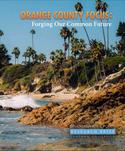Many years ago I remember a television commentator saying more Americans have outhouses than computer connections. This was in the early days of dial up modems. He seemed to suggest that household computers were little more than Japanese video games, which was actually true at the time. Well, thirty years have passed and this afternoon I received a package for one of my neighbors. Evidently he ordered a shovel on the interwebs. read more »
Geography
Future Hubs of Africa and Asia
On UN projections between 2015 and 2050, the world population will grow by nearly 2.38 billion people, from 7.35 billion to 9.73 billion. Although this 32% growth is a big increase, it marks a slowdown from the 66% growth rate recorded in the preceding 35 years (1980-2015). Total Fertility Rates (TFRs) have come down all over the world and are expected to continue falling. read more »
- Login to post comments
World Urban Areas: 1,064 Largest Cities: 2018 Update
This year, as in 2017, there are 37 megacities --- urban areas estimated to have more than 10 million residents. The 20 largest urban areas are indicated in Figure 1. Tokyo-Yokohama continued to be the largest, as it has been for more than six decades. Second ranked Jakarta and third ranked Delhi continue to edge up on Tokyo-Yokohama. Even if their much faster growth were to continue at the current rate, neither would assume the top position over Tokyo-Yokohama until after 2030. read more »
- Login to post comments
The Urban Containment Effect (Zoning Effect) on Australian House Prices
In delivering the Annual Report of the Bank to the House of Representatives Standing Committee on Economics, Finance and Public Administration on August 18, 2006, (now former) Reserve Bank of Australia Governor Ian MacFarlane expressed concern about Australia’s house prices, which had escalated severely in relation to incomes. read more »
- Login to post comments
Orange County Focus: Forging Our Common Future
How can Orange County become a better place to live for all of its residents? Joel Kotkin and Marshall Toplansky explore the challenges and solutions in Orange County Focus: Forging Our Common Future, a research brief from Chapman University's Center for Demographics and Policy. Read an excerpt from the report below: read more »
- Login to post comments
Moving Away From The Major Metropolitan Areas: The 2017 Estimates
The new 2017 US Census Bureau metropolitan area population estimates have been published. They show a significant increase in domestic migration away from the largest cities (the major metropolitan areas, with more than 1,000,000 population) toward the metropolitan areas with from 500,000 to 1,000,000 population. The data also shows an acceleration of suburban versus core county population growth within the major metropolitan areas themselves. The data is summarized in the table at the bottom of the article. read more »
- Login to post comments
Alcoholism May Be Linked To Living Further North
A new analysis by 24/7 Wall St., reprinted in part by USA Today, lists all 50 U.S. states in order of "excessive alcohol consumption," which is defined as binge drinking ("four or more drinks in a single occasion for women and five or more for men") or heavy drinking ("at least eight drinks per week for women and 15 for men"). read more »
- Login to post comments
The Evolving Urban Form: Paris
Probably no city inspires the romance of Paris, which has been a principal object of writers for centuries. The Paris they have written about is limited almost exclusively to the small geography of the ville de Paris, which has expanded from 1.7 square miles (4.3 square kilometers) in the 14th century to 40.5 square miles (105.0 square kilometers) in 1860, its latest annexation (Note). The ville de Paris is however, by no means all of Paris, representing less than four percent of the land in the built-up urban area, and little more than 0.5 percent of the metropolitan area. read more »
- Login to post comments
California's Dense Suburbs and Urbanization
Many observers think California urban areas are more geographically expansive ("lower density" or to use the pejorative term, more "sprawling") then those elsewhere in the nation, especially the Northeast Corridor, which runs from the Washington DC metropolitan area through Baltimore, Philadelphia, New York, Hartford, Providence to Boston. This obsolete view is a leftover from the pre-automobile city of more than a century ago, when the largest American cities (metropolitan areas) had far higher urban densities, smaller suburban expenses, and no cars. read more »
- Login to post comments
Where Small Town America Is Thriving
Big city America has long demonstrated a distaste for its smaller cousins. This sentiment has, if anything, intensified with the election of President Donald Trump, whose improbable victory was made possible by strong support in small cities and towns across the country. read more »
- Login to post comments



















